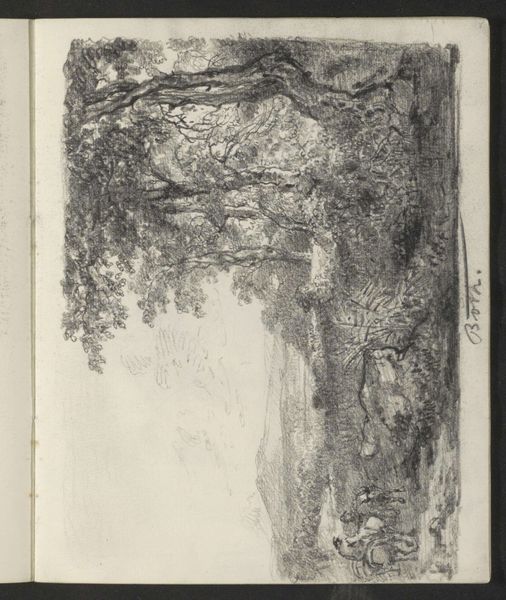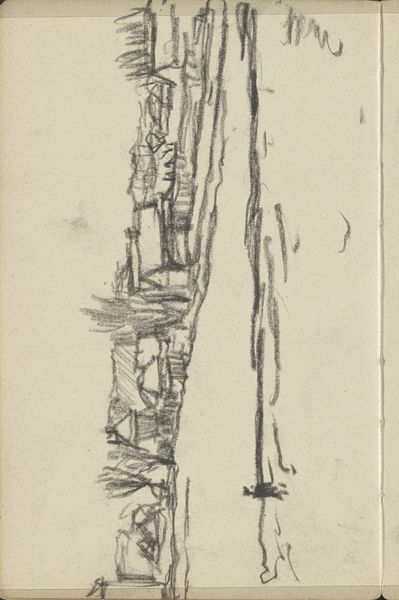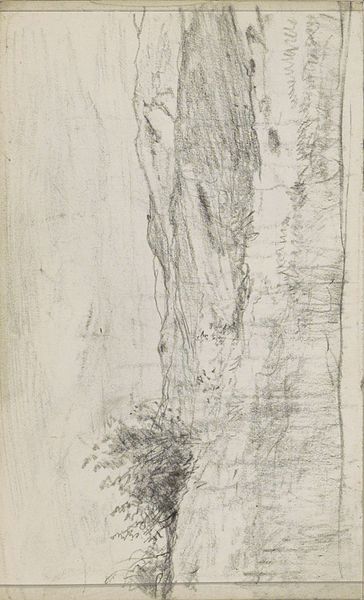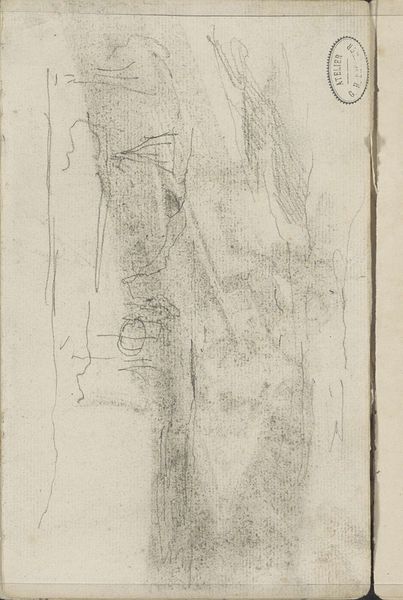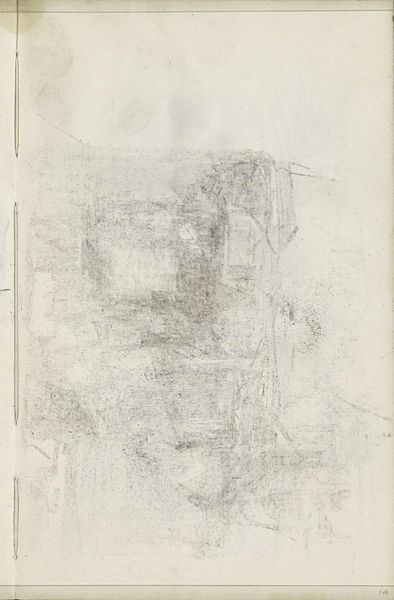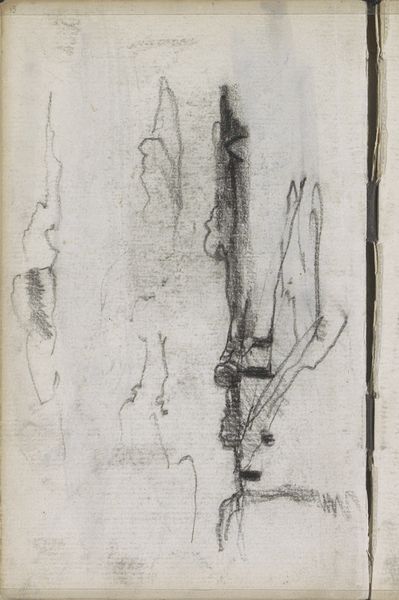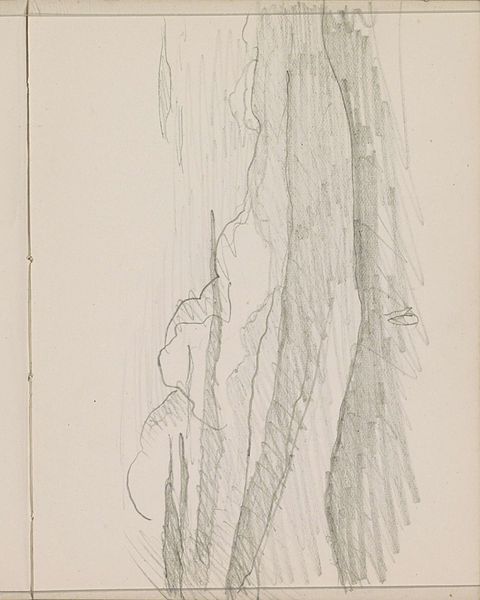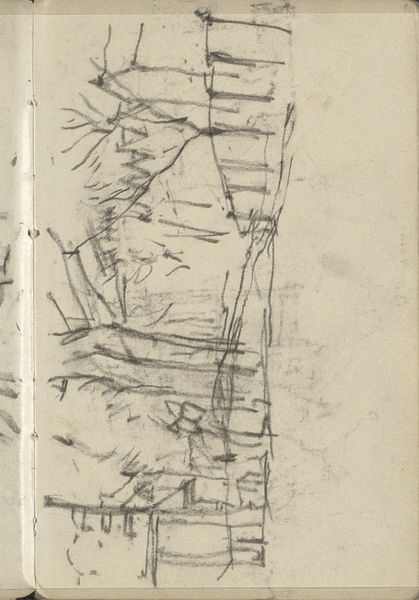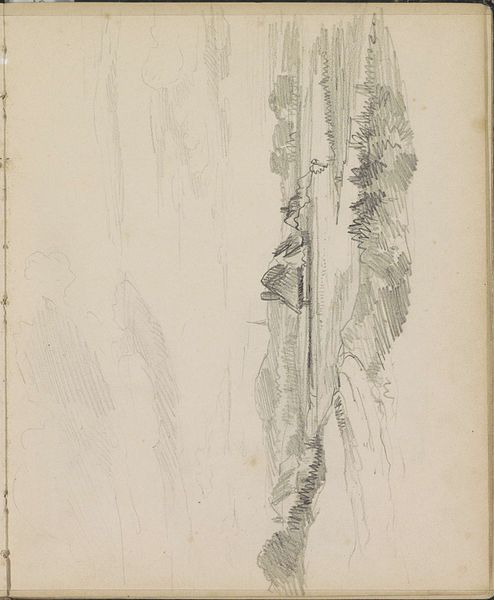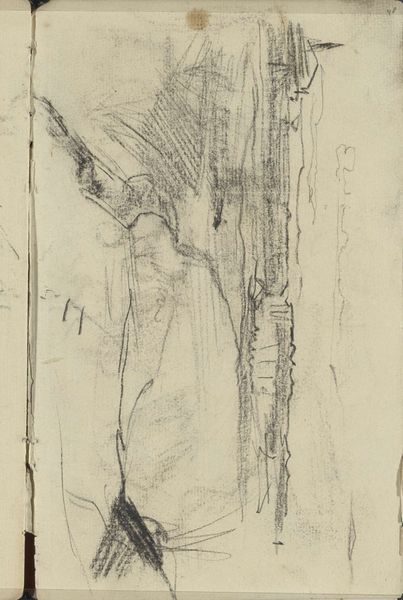
drawing, paper, pencil, graphite
#
drawing
#
impressionism
#
pencil sketch
#
landscape
#
paper
#
form
#
pencil
#
line
#
graphite
Copyright: Rijks Museum: Open Domain
Curator: Here we have George Hendrik Breitner’s "Landschap, mogelijk een duinlandschap," which translates to "Landscape, possibly a dune landscape," created between 1884 and 1886. It’s a pencil and graphite drawing on paper. Editor: It feels incredibly raw, like a fleeting moment captured with immediacy. The dark, almost violent slashes of graphite against the pale paper—it’s quite stark. Curator: That rawness is key. Breitner was part of the Amsterdam Impressionism movement; this drawing embodies their interest in capturing the fleeting, often unrefined, aspects of modern life. Dune landscapes carried potent symbolism in the Netherlands, often linked to national identity. Editor: Symbols aside, the composition draws the eye. The artist has created an almost chaotic balance with the bold horizontal lines disrupting the verticality of the suggested forms. I am intrigued by its unfinished appearance, suggesting a world beyond the borders of the page. Curator: The lack of a defined narrative is notable. This isn’t a picturesque landscape, but a study of form. Breitner seeks to represent nature as sensory experience. It seems to challenge our understanding of a landscape drawing, but look closely—do the forms invite particular emotions or associations, drawing on established visual symbolism of Dutch identity? Editor: The sparseness certainly invites introspection. The recurring vertical strokes imply an arboreal sense. Do the artist's strategic inclusions carry the emotional weight that establishes context? Perhaps. However, I find its strength lies in its structural composition. The use of chiaroscuro makes for a dramatic play of light and shadow, imbuing the work with its evocative power. Curator: An excellent point. By using a typically quiet landscape to emphasize light, shadow, and tonal variation, Breitner highlights an enduring cultural conversation around nature and national identity. The symbol of nature remains potent, as does Breitner’s way of framing the visual. Editor: In summary, it's the power of line and form over conventional landscape painting that strikes me most. Curator: Precisely. Its enduring presence hints to the cultural and visual legacy of the landscapes they occupy.
Comments
No comments
Be the first to comment and join the conversation on the ultimate creative platform.

